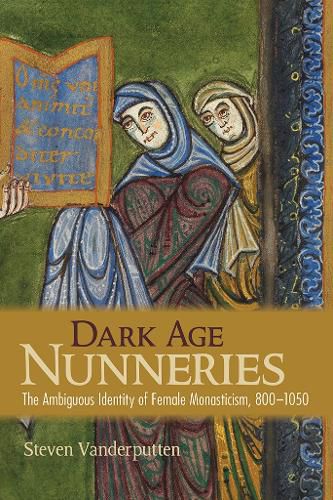Readings Newsletter
Become a Readings Member to make your shopping experience even easier.
Sign in or sign up for free!
You’re not far away from qualifying for FREE standard shipping within Australia
You’ve qualified for FREE standard shipping within Australia
The cart is loading…






In Dark Age Nunneries, Steven Vanderputten dismantles the common view of women religious between 800 and 1050 as disempowered or even disinterested witnesses to their own lives. It is based on a study of primary sources from forty female monastic communities in Lotharingia-a politically and culturally diverse region that boasted an extraordinarily high number of such institutions. Vanderputten highlights the attempts by women religious and their leaders, as well as the clerics and the laymen and -women sympathetic to their cause, to construct localized narratives of self, preserve or expand their agency as religious communities, and remain involved in shaping the attitudes and behaviors of the laity amid changing contexts and expectations on the part of the Church and secular authorities.
Rather than a dark age in which female monasticism withered under such factors as the assertion of male religious authority, the secularization of its institutions, and the precipitous decline of their intellectual and spiritual life, Vanderputten finds that the post-Carolingian period witnessed a remarkable adaptability among these women. Through texts, objects, archaeological remains, and iconography, Dark Age Nunneries offers scholars of religion, medieval history, and gender studies new ways to understand the experience of women of faith within the Church and across society during this era.
$9.00 standard shipping within Australia
FREE standard shipping within Australia for orders over $100.00
Express & International shipping calculated at checkout
In Dark Age Nunneries, Steven Vanderputten dismantles the common view of women religious between 800 and 1050 as disempowered or even disinterested witnesses to their own lives. It is based on a study of primary sources from forty female monastic communities in Lotharingia-a politically and culturally diverse region that boasted an extraordinarily high number of such institutions. Vanderputten highlights the attempts by women religious and their leaders, as well as the clerics and the laymen and -women sympathetic to their cause, to construct localized narratives of self, preserve or expand their agency as religious communities, and remain involved in shaping the attitudes and behaviors of the laity amid changing contexts and expectations on the part of the Church and secular authorities.
Rather than a dark age in which female monasticism withered under such factors as the assertion of male religious authority, the secularization of its institutions, and the precipitous decline of their intellectual and spiritual life, Vanderputten finds that the post-Carolingian period witnessed a remarkable adaptability among these women. Through texts, objects, archaeological remains, and iconography, Dark Age Nunneries offers scholars of religion, medieval history, and gender studies new ways to understand the experience of women of faith within the Church and across society during this era.